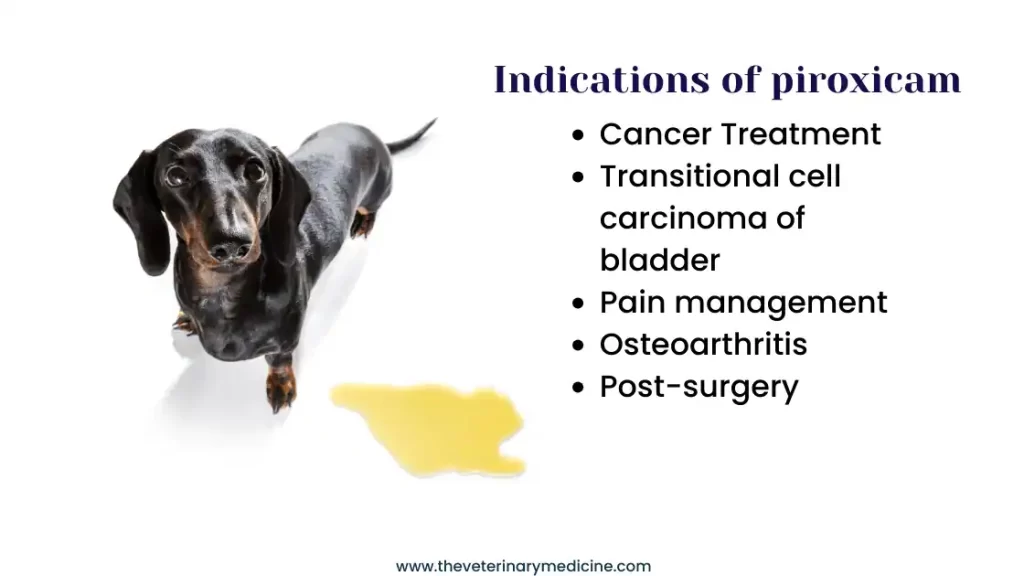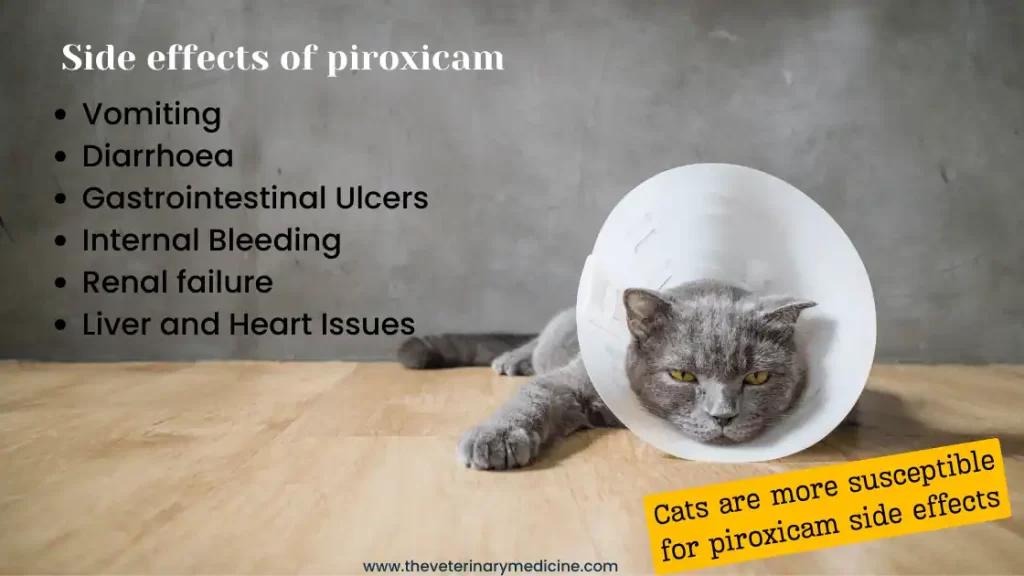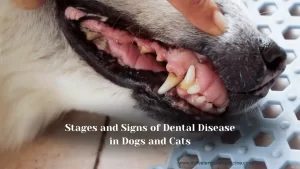Indications, Benefits, Dosage, Side effects and Alternative of Piroxicam
Piroxicam is a non-inflammatory drug (NSAID) used in both human and pets for various problems. It is commonly used in veterinary medicine (dogs, cats, and a few other species) for the management of pain, inflammation, and tumours like transitional cell carcinoma of urinary bladder. Along with potential benefits it also has some side effects and significant risk like other NSAIDs and the class oxicams in canines and felines. Piroxicam dosage may vary according to the condition in cats and dogs and dosage must be followed according to the bodyweight and vet’s recommendation.
What is Piroxicam and how does it work?
Belonging to the oxicam class of NSAIDs, piroxicam primarily works by nonselective inhibition of cyclooxygenase (COX) enzymes responsible for prostaglandin production. Prostaglandins play essential roles in pain, inflammation, and other physiological functions. Anti-tumour mechanism of action is still to be determined but its therapeutic success is well known and documented. It causes tumour cell apoptosis and disrupts angiogenesis. In humans, piroxicam is mainly used to treat arthritis but is not currently FDA-approved for veterinary use. Its use is considered “off-label” or “extra-label.” This means that while veterinarians may prescribe it for specific conditions, it has not undergone the same rigorous testing and approval process as medications specifically designed for animals.
Half life of piroxicam is shorter in cats (12-13 hours) in comparison to dogs (37-40 hours). It is well absorbed on oral administration and primarily excreted in urine.
Indications / Uses of Piroxicam in Pets:
Piroxicam is primarily prescribed for pets suffering from conditions such as osteoarthritis, certain types of cancer, and musculoskeletal disorders. Its anti-inflammatory properties make it an effective option for managing pain associated with these ailments.
- Cancer Treatment: Piroxicam exhibits anti-tumour properties, making it an “off-label” or evidence-based option for specific cancers in dogs and cats. It can improve survival rates and quality of life of pets with specific cancers if used in combination with other therapies or anti-tumour drugs like carboplatin or cisplatin. It has positive effect on survival time. It commonly targets:
- Transitional cell carcinoma (TCC) of the bladder: It’s a type of cancer affecting the bladder wall lining in dogs and cats. Studies show effectiveness in dogs and cats, often used in combination with other therapies or chemotherapies.
- Squamous cell carcinoma: May offer palliative benefits in dogs and cats, though data is limited.
- Other cancers: Limited evidence suggests potential in prostatic cancer, colorectal cancer, colorectal polyps, mammary tumors and mast cell tumors.
- Pain Management: While safer alternatives exist, piroxicam was historically used for pain associated with:
- Osteoarthritis: Its effectiveness is comparable to other NSAIDs, but concerns regarding side effects have led to reduced usage.
- Post-surgical pain: Short-term use may be considered, but safer options are preferred.
Dosage of Piroxicam for Dogs and Cats:
Understanding the right dosage based on your pet’s body weight and underlying condition is essential for safe administration of Piroxicam. It is crucial to consult with a veterinarian to determine the correct dosage based on the specific needs and health conditions of your pet.
Piroxicam dose for Dogs:
0.3 mg/kg orally. Repeat every 24 to 72 hours.
Piroxicam suppositories: 20 mg/dog per rectum every 2–3days
Use of piroxicam suppositories provides palliative treatment of rectal tumours in dogs and improves quality of life.
Piroxicam dose for Cats:
0.3 mg/kg orally. Repeat every 24 to 96 hours.
Always should be started at least frequent administration and slowly frequency must be increases if no side effects observed.
Piroxicam is also indicated in rabbits, mice, and birds. However, individual variations may occur, and a veterinarian’s guidance is crucial to determine the precise dosage.
Piroxicam should be given with food to decrease the chances of GI side effects.
Side effects of Piroxicam:
While Piroxicam can be effective in managing pain and inflammation, it is important to be aware of potential side effects. It has narrow margin of safety. Common side effects may include gastrointestinal issues such as vomiting, diarrhea, blood in stool (bright red or dark) and decreased appetite. In rare cases, more severe side effects like GI ulceration, bleeding disorder, and kidney damage like problems may occur. These risks are particularly concerning for cats, as they are more susceptible to NSAID-related kidney issues. Skin ulcers have been reported in cats.
Precautions:
To ensure the safe usage of Piroxicam, pet owners should adhere to several precautions:
- Regular Veterinary Check-ups: Schedule regular check-ups with your veterinarian to monitor your pet’s health and adjust the dosage if necessary. Do not alter or change the dosage or frequency without asking your vet.
- Monitor for Side Effects: Keep a close eye on your pet for any signs of side effects and report them promptly to your veterinarian. Monitoring of kidney and liver function is also crucial in long term usages. It has more chances of renal toxicity if used with aminoglycoside antibiotics or cisplatin. With other NSAIDs or steroids it increases the possibility of haemorrhages or bleeding problems.
- Avoid Other NSAIDs: Concurrent use of other NSAIDs can increase the risk of adverse effects, so it is crucial to inform your veterinarian of all medications your pet is taking.
Contraindications for Piroxicam Use:
Piroxicam is not suitable for all pets. It should not be used in animals with allergies to NSAIDs. It is unsuitable for pets with pre-existing GI, kidney, or liver issues, pregnant/nursing animals, or those taking other NSAIDs or steroids for pain management.

Overdosage:
Accidental overdosage can have serious consequences. If you suspect your pet has ingested an excessive amount of Piroxicam, seek immediate veterinary attention. Symptoms of overdosage may include vomiting, diarrhea, lethargy, and in severe cases, kidney failure.
Nursing and Pregnancy Safety:
Piroxicam is generally not recommended for pregnant or nursing pets due to potential risks to the developing fetus or nursing offspring. Consult with your veterinarian to explore alternative pain management options that are safer for pregnant or nursing pets.
Alternatives to Piroxicam for Pain Management and Cancer Treatment:
Veterinarians often prioritize safer NSAIDs like meloxicam, carprofen, and firocoxib for pain management and inflammation control. Other cancer treatment options may include surgery, chemotherapy, radiation therapy, or newer targeted therapies depending on the specific diagnosis and individual needs. Your veterinarian can discuss the best options for your pet’s individual needs.
It can be used in combination with methotrexate or other opioids to reduce the dosage and discomfort in cancer patients.
In conclusion:
Piroxicam can be a valuable tool in managing tumours, pain and inflammation in pets when used responsibly and under the guidance of a veterinarian. While it offers potential benefits in specific cancer cases and limited pain management situations, its significant side effects and off-label status demand careful consideration by veterinarians and pet owners. Understanding its indications, correct dosage, potential side effects, and taking necessary precautions are crucial steps in ensuring the health and well-being of your furry companion. Discussing alternatives, potential risks, and close monitoring requirements is crucial before making informed decisions regarding piroxicam usage in your pet. Always consult with your veterinarian before starting any medication regimen for your pet to receive personalized advice based on their specific needs.
Piroxicam preparations:
Oral tablets (mouth dissolving or dispersible) and Capsules: 10 mg, 20 mg, 40 mg
Injectable: 20 mg/ml solution (2 ml contains 40 mg), 100 ml vial
Gel: 112 gm, 40 gm, 30 gm, 20 gm (0.5% w/w concentration)
Suppositories: For management of colorectal polyps/ tumours.
Popular brand names (Human Preparations): Feldene tablet, Pirox tablet, Pytex Tablet, Brexin, Denicam 20, Capirox 20, Faxiden, Grazeo 10, Grazeo 20
Scientific Evidence:
- A 2021 study in the Journal of the American Veterinary Medical Association found piroxicam effective in controlling TCC progression in dogs when combined with other therapies. However, it also highlighted the importance of close monitoring due to side effects.
- A 2018 review in the Journal of Veterinary Internal Medicine acknowledged piroxicam’s potential in treating TCC but emphasized its off-label status and urged veterinarians to weigh risks and benefits carefully before prescribing.
- A 2014 study in the Journal of Small Animal Practice concluded that piroxicam could be a viable option for managing pain in cats with osteoarthritis, but only with meticulous monitoring and alternative options being explored first.

Frequently Asked Questions (FAQs) about Piroxicam:
How do I give piroxicam tablets or capsules to my pet?
Oral medication should be given after food or with food, disguised in treats of food. Or place carefully on the back of the tongue and hold the mouth close. Suppositories must be administered per-rectally.
How long will my pet need to take piroxicam?
Duration of the treatment depends on the ailment and therapy evaluation. And this may vary between pets.
What should I do if my pet is accidentally given too many doses?
Contact your vet immediately as an overdose of piroxicam can be life threatening. Complications can include acute kidney injury and severe ulceration of the GI tract.
What to do in case of a missed dose?
If a dose is missed, give as soon as possible and if the next dose time is near then skip the missed dose. Double dosing to make up for the missed dose and exceeding the total stated dose in is not recommended.
What should I do if my pet is unwell while taking piroxicam?
If you feel that your pet is unwell after taking piroxicam then stop further administration and contact your veterinarian.
How long can a dog live on piroxicam?
Increased mean survival time and better quality of life has been reported in dogs and cats suffering with TCC has been reported. Exact survival time is hard to quote and varies on the extent and other factors.
How much piroxicam can I give my dog?
Off-label use is recommended @ 0.3 mg per kg body weight in dogs and should be repeated as per instructions of your vet.
Is piroxicam toxic to dog?
Yes. Piroxicam has serious side effects on overdosage like GI signs (vomiting, ulcers, diarrhoea, internal haemorrhage), renal failure, cardiac failure, urinary incontinence, lung and liver congestion etc.
Can piroxicam cause kidney failure in dogs?
Yes. Overdose may result into acute kidney injury and renal failure.
How fast does piroxicam work in dogs?
Piroxicam is well absorbed after oral administration and takes effect in 1 to 2 hours.
Is piroxicam a pain killer?
Yes. It is a non-steroidal anti-inflammatory drug (NSAID) of oxicam class.
Which is better for dogs piroxicam or meloxicam?
Piroxicam is preferred mainly for the treatment of TCC or with chemotherapy in pets due to evidence based result but meloxicam has a greater selectivity for COX-2.
Is piroxicam harmful to liver?
Severe hepatitis, acute liver failure or asymptomatic elevations in serum aminotransferase levels may result due to piroxicam. Several instances of chronic vanishing bile duct syndrome have been attributed to other oxicam NSAIDs, but not specifically to piroxicam.
Disclaimer: This information is for educational purposes only and should not be interpreted as veterinary advice. Always consult with a licensed veterinarian for diagnosis, treatment recommendations, and guidance specific to your pet’s individual needs and health status





